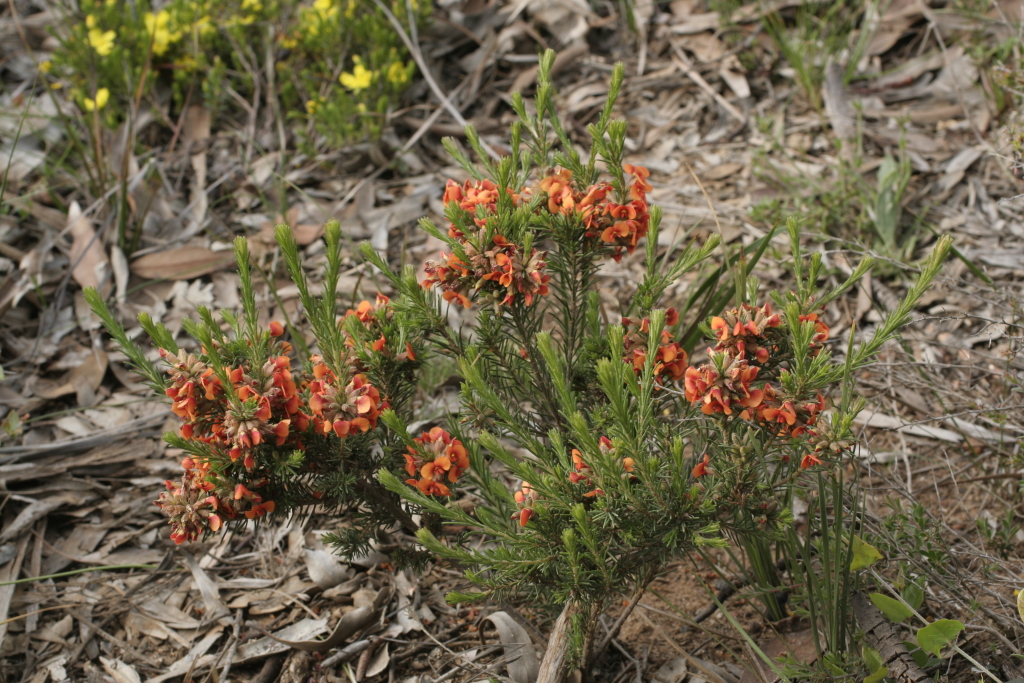Dillwynia sericea
A.Cunn.Erect to procumbent shrub, 0.5–1 m tall; stems densely covered with spreading or appressed hairs, particularly the younger branches. Leaves linear, mostly 5–20 mm long, less than 1 mm wide, moderately crowded, smooth or tuberculate, glabrous or with long hairs, apex usually shortly acuminate; petiole to 1 mm long. Flowers mostly paired (sometimes single) in leaf-axils, often forming dense, leafy inflorescences; pedicel to 3 mm long. Calyx 4–7 mm long, pubescent to virtually glabrous; standard 8–12 mm long, notched, apricot-coloured with a red centre (rarely clear yellow); wings shorter, oblanceolate, reddish; keel shortest, obtuse, reddish. Pod obovoid, c. 5 mm long, c. 3.5 mm wide, sessile, white-pubescent, slightly exceeding calyx; seeds usually 2. Flowers Sep.–Dec.
LoM, MuM, Wim, GleP, Brid, VVP, VRiv, MuF, GipP, OtP, WaP, Gold, CVU, GGr, DunT, NIS, EGL, EGU, WPro, HSF, HNF, OtR, Strz, VAlp. Also SA, NSW. Widespread across most of Victoria in heathland and heathy woodland.
Plants are very variable in a number of characteristics including indumentum, flower colour and leaf size and density.
In New South Wales plants that occur or granite or sandstone ridges with long (more than 10 mm) warty leaves are recognised as a distinct species D. rudis Sieber ex DC. Similar plants occur in Victoria in coastal or sandy areas and dry ridges (e.g. Grampians, Anglesea, Portland, Bendigo Whipstick, Strathbogie Ranges, and the upper Genoa River, Little Desert and Big Desert). However, this distinction does not seem to hold in Victoria. Leaf length does not always correlate with texture (warty or smooth). Furthermore, numerous intermediates occur in Victoria, and plants often grade from strong warty to weakly/sparsely warty in many of the above mentioned locations. This complex is under revision.
Also see note under Dillwynia sp. aff. cinerascens (Pine Mountain).
Jeanes, J.A. (1996). Fabaceae. In: Walsh, N.G.; Entwisle, T.J., Flora of Victoria Vol. 3, Dicotyledons Winteraceae to Myrtaceae, pp. 663–829. Inkata Press, Melbourne.
 Spinning
Spinning
